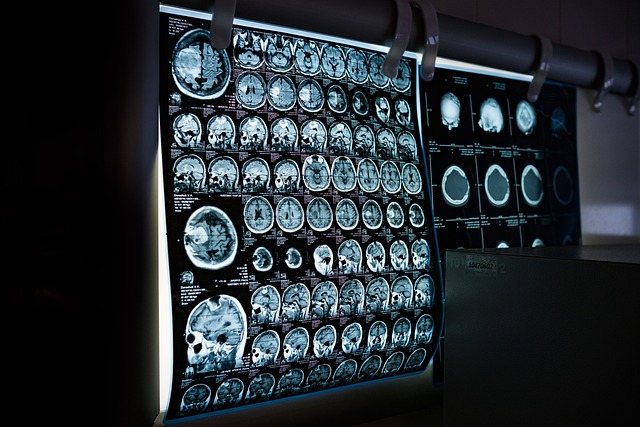How Triple Negative Breast Cancer Differs from Other Types
Triple negative breast cancer is often discussed as a distinct subtype because it lacks three common receptors used to guide treatment in many other breast cancers. Understanding what this means helps explain why testing, treatment choices, and follow up plans can look different for people diagnosed in Thailand and elsewhere.

Triple negative breast cancer is defined by what pathologists do not detect on the tumor cells. Specifically, the cancer tests negative for estrogen receptors, progesterone receptors, and HER2. Because many standard treatments target those receptors, the absence of all three changes how doctors diagnose, plan therapy, and monitor outcomes. For English speaking readers in Thailand, knowing these differences can support clearer conversations with local services and multidisciplinary care teams.
Why is triple negative breast cancer different?
Triple negative status is determined in the laboratory using immunohistochemistry for hormone receptors and HER2 testing by immunohistochemistry and sometimes in situ hybridization. When a tumor is negative for all three targets, clinicians cannot use endocrine therapy or HER2 targeted agents that are mainstays for other breast cancer types. Biologically, many triple negative tumors share basal like features, tend to be higher grade, and often have a higher proliferation index, such as elevated Ki 67. These traits help explain why the disease can grow and spread more quickly during the first few years after diagnosis, even though it can also respond well to certain chemotherapies.
The keyword question Why Is Triple Negative Breast Cancer Different from Others appears often because the answer spans biology, testing, and available therapies. The negative receptor profile is the core reason it behaves and is treated differently from luminal and HER2 positive cancers.
What sets triple negative breast cancer apart?
Epidemiology and risk patterns contribute to its distinct profile. Triple negative breast cancer is more common in younger adults than other types and is associated with inherited mutations, especially in the BRCA1 gene. People with a strong family history or early onset disease are often offered genetic counseling and testing. In many settings in Thailand, both public and private hospitals can facilitate these assessments as part of comprehensive care. Pathologically, tumors are frequently high grade at diagnosis, and imaging plus biopsy are critical to characterize stage and biology before treatment planning.
Therapeutically, chemotherapy plays a central role. Triple negative tumors often show meaningful responses to anthracycline and taxane based regimens, and platinum agents are commonly considered. The lack of hormone receptors means endocrine tablets are not effective. For some patients at higher risk or with specific biomarkers, additional options may be discussed, including immune checkpoint inhibitors in combination with chemotherapy in early stage settings, antibody drug conjugates in later lines, and PARP inhibitors for those with susceptible BRCA mutations. These options depend on stage, prior treatments, and biomarker results obtained from the tumor and or germline testing.
The phrase What Sets Triple Negative Breast Cancer Apart is also tied to recurrence patterns. The risk of recurrence tends to be higher in the first three to five years after diagnosis and then declines. This differs from hormone receptor positive disease, where recurrence risk can persist at a lower level for longer periods. Follow up schedules and imaging are tailored to symptoms, stage at diagnosis, and local guidelines.
How does triple negative differ from other types?
Comparing care pathways helps clarify the differences. Hormone receptor positive cancers often receive years of endocrine therapy after surgery and radiation or chemotherapy, which lowers recurrence risk by targeting estrogen driven growth. HER2 positive cancers typically receive HER2 directed therapy alongside chemotherapy, significantly improving outcomes. In contrast, triple negative disease relies first on surgery, radiation when indicated, and systemic chemotherapy. In early stage high risk cases, neoadjuvant chemotherapy is frequently used to shrink the tumor before surgery and to assess pathologic complete response, which has prognostic value.
In metastatic settings, systemic therapy sequences are individualized. If the tumor expresses PD L1 or if a person has a germline BRCA mutation, immunotherapy or PARP inhibitors may be considered based on current approvals and availability. Antibody drug conjugates such as sacituzumab govitecan can be options after prior lines of therapy. Access may vary between hospitals and regions in Thailand, so discussing availability, potential benefits, and side effects with an oncology team is important for informed decision making.
The question How Does Triple Negative Breast Cancer Differ from Other Types highlights another key point. Screening and diagnosis do not change because of subtype, but treatment personalization does. Molecular tests, stage, node status, and overall health guide choices. Supportive care, fertility preservation discussions for younger patients, and rehabilitation after surgery remain important parts of care for all subtypes.
Diagnosis, staging, and local context in Thailand
The diagnostic pathway begins with clinical evaluation, imaging such as mammography and ultrasound, and a core needle biopsy to confirm cancer and measure receptors and HER2. Staging uses physical examination and imaging tailored to symptoms and risk. In Thailand, multidisciplinary tumor boards are common in larger centers, aligning with international guidelines while adapting to local practice patterns and medication availability. People may receive care through public hospitals, university centers, or private clinics. When considering local services in your area, coordination between pathology, oncology, surgery, and radiation teams helps ensure that test results inform timely treatment.
Living with and beyond treatment
Because triple negative disease concentrates recurrence risk in the early years, follow up tends to be frequent at first, focusing on history and examination rather than routine scans for people without symptoms. Management of late effects from chemotherapy and radiation, lymphedema care, and psychosocial support are central to recovery. Nutrition, safe physical activity, and management of treatment related menopause or fertility issues are individualized. For those with hereditary risk, relatives may consider counseling and appropriate surveillance pathways.
This article is for informational purposes only and should not be considered medical advice. Please consult a qualified healthcare professional for personalized guidance and treatment.
Conclusion
Triple negative breast cancer differs from other types because it lacks the three receptor targets that guide many standard treatments. That single laboratory finding reshapes therapy choices, timelines of risk, and the value of additional tests such as genetic and biomarker evaluations. With coordinated care, evidence based chemotherapy, and selected use of immunotherapy, PARP inhibitors, or antibody drug conjugates when appropriate, people can receive treatment plans aligned with current standards in Thailand and worldwide.




